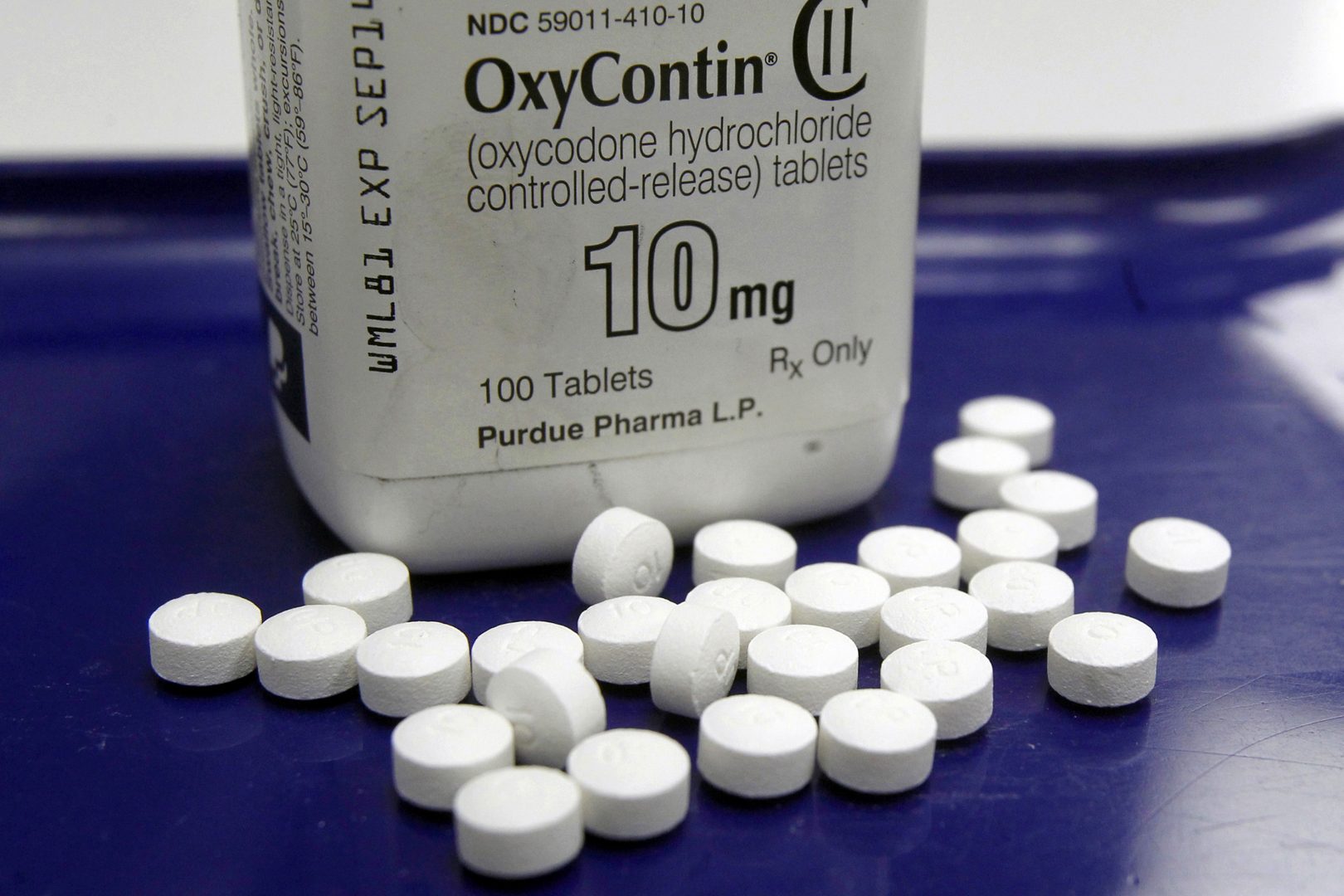
FILE PHOTO: This Feb. 19, 2013, file photo shows OxyContin pills arranged for a photo at a pharmacy in Montpelier, Vt.
Toby Talbot / AP Photo

FILE PHOTO: This Feb. 19, 2013, file photo shows OxyContin pills arranged for a photo at a pharmacy in Montpelier, Vt.
Toby Talbot / AP Photo

Toby Talbot / AP Photo
FILE PHOTO: This Feb. 19, 2013, file photo shows OxyContin pills arranged for a photo at a pharmacy in Montpelier, Vt.
(Philadelphia) — Last year, Pennsylvania’s Department of Human Services launched what officials and researchers say is a first-of-its-kind program: a pay-for-performance effort to incentivize hospitals across the state to connect Medicaid patients who visit the emergency room for an opioid overdose with ongoing substance abuse treatment.
Between 2016 and 2017, emergency rooms across Pennsylvania saw soaring rates of opioid overdoses — they increased in hospitals statewide by 80%. Gov. Tom Wolf declared the opioid epidemic a state of emergency in 2018. Government agencies and medical professionals alike have widely acknowledged that opioid use disorder was most effectively treated with medication-assisted treatment, such as buprenorphine and methadone, which reduces cravings and withdrawal symptoms from opioids and which research shows decreases the chances of overdose death.
But emergency rooms typically don’t offer patients ongoing care — they take care of their critical needs and send them on their way.
“Basically, if a patient came into the emergency department with opioid use disorder or after an overdose, they would generally leave the hospital, maybe with a phone number for a treatment center, and not get that really supervised transition,” said Austin Kilaru, an emergency room physician with the University of Pennsylvania Health System and a researcher who evaluated the state program.
Increasingly, he said, emergency doctors feel that’s a missed opportunity.
“These changes are happening really rapidly,” Kilaru said.
The ER might be the only point of contact patients with opioid use disorder have with the medical system. Recognizing this, the Department of Human Services developed its new incentive program, offering 155 eligible hospitals up to $193,000 each to adopt any combination of four pathways, each designed to connect patients with opioid treatment upon leaving the emergency room.
The first pathway involves sending patients home with a first dosage or prescription for buprenorphine, often known as Suboxone. The second pathway requires emergency departments to work with community partners to facilitate a “warm handoff” to a local treatment center. Third, emergency departments connect pregnant mothers with specialized treatment. And fourth, the emergency rooms initiate medication-assisted treatment for those who need inpatient treatment at the hospital.
One year after its implementation, researchers from the University of Pennsylvania evaluated the incentive program. They found that half the eligible hospitals had adopted all four pathways, and 80% had adopted at least one. “We think that’s really good participation,” said Sally Kozak, deputy secretary for the state’s Office of Medical Assistance. “I mean, of course, we always wish that participation would have been even better.”
The state paid the hospitals out of $30 million from the Hospital Assessment Initiative, which collects a portion of revenue from acute-care hospitals across the state, pools it, and then allocates some of the money to quality-improvement efforts such as this one.
Going forward, hospitals will receive more money if they can show that connecting patients to treatment actually works.
Before the program started, an average of 30% of patients were still in treatment a month after they left the emergency room. To earn another payout, hospitals will have to have to show improvement in their treatment retention rate.
Other states have approached the issue differently. In Massachusetts, emergency rooms are required by law to offer medication-assisted treatment. California offers doctors education. But Pennsylvania is the first to use an incentive-based, quality-improvement effort to work on the issue, according to researchers and officials. Kilaru said using that strategy allowed hospitals to be nimble and adopt the pathways that met the needs of their communities, avoiding a one-size-fits-all regulation that might manifest differently in rural or urban settings.
The researchers’ evaluation found the pathways least likely to be adopted were the ones involving starting buprenorphine. Kilaru attributed that to ongoing stigma against medication-assisted treatment, and the attitudes some of emergency room professionals.
“There still is somewhat of a culture as emergency room providers, it’s ‘Oh, we’ve saved the patient. We’ve ruled out this life-threatening illness, and like any other patient we discharge, we can trust that they’ll be OK if we send them home,’” he said.
Kilaru said the incentive was the most successful in hospitals that already had good relationships with community treatment centers, and where there were enthusiastic leaders who already wanted to connect emergency department patients with ongoing care. They just may have needed the financial or institutional backing to make it happen.
WHYY is the leading public media station serving the Philadelphia region, including Delaware, South Jersey and Pennsylvania. This story originally appeared on WHYY.org.

Get insights into WITF’s newsroom and an invitation to join in the pursuit of trustworthy journalism.
The days of journalism’s one-way street of simply producing stories for the public have long been over. Now, it’s time to find better ways to interact with you and ensure we meet your high standards of what a credible media organization should be.